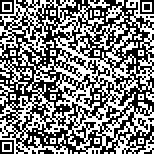| This article has been:Browse 2142Times Download 3809Times |

scan it! |
|
|
| DOI:10.13522/j.cnki.ggps.2017.0097 |
|
| Effect of Different LULC Datasets on Hydrologic Modeling |
|
JIN Xin, CHEN Qiong, JIN Yanxiang
|
|
Qinghai Normal University, Xining 810016, China
|
| Abstract: |
| Land-use/land-cover is an important input into the hydrologic model. It can affect the rates of interception, in?ltration, evapotranspiration, and groundwater recharge that result in influences to the timing and amounts of river runoff. 【Objective】 Better understand the impacts of the different accuracy of land-use/land-cover data on the hydrologic modeling. 【Method】 We evaluated the different accuracy of land-use/land-cover data by comparing three land-use/land-cover datasets (NLULC, NLULC-1km and MICLULC) based on different spatial resolution and interpretation accuracy. Subsequently, the three land-use/land-cover datasets were input into SWAT model and simulated the river runoff from mountainous area in Upper Reach of the Heihe River, respectively. 【Result】 Inputting the land-use/land-cover dataset with the higher spatial resolution and less land-use/land-cover classification was important to reduce the complexity and works during the model calibration process; After model calibration, the land-use/land-cover dataset with more detailed land-use/land-cover classification corresponded to a worse model efficiency. Moreover, the impacts of spatial resolution of the land-use/land-cover dataset would be weakened with model calibration. 【Conclusion】 Inputting land-use/land-cover data with higher spatial resolution and less classification to SWAT can improve the model efficiency when simulating the stream flow. |
| Key words: land-use/land-cover; SWAT; runoff; upper reach of the Heihe river |
|
|